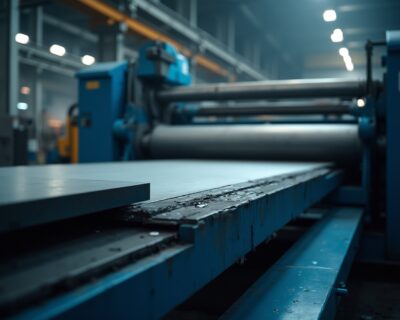Blog

Understanding AZ31B Magnesium Alloy: A Comprehensive Tutorial on Properties and Applications
Introduction
In the realm of advanced materials, AZ31B magnesium alloy stands out as a pivotal player, particularly in industries where weight reduction is not just advantageous but essential. This alloy, a carefully engineered blend of magnesium, aluminum, and zinc, offers a compelling combination of:
- Lightweight characteristics
- Corrosion resistance
- Excellent formability
These features make it a preferred choice in sectors such as aerospace and automotive. As organizations strive for efficiency and performance, understanding the unique properties and applications of AZ31B becomes critical. From its impressive mechanical attributes to its adaptability in complex manufacturing processes, this article delves into the multifaceted advantages of AZ31B magnesium alloy, providing procurement managers with the insights needed to leverage this material for strategic advantage in their projects.
Overview of AZ31B Magnesium Alloy: Classification and Characteristics
The material known as AZ31B magnesium is categorized as a wrought magnesium composition, primarily consisting of magnesium, aluminum, and zinc. Renowned for its lightweight characteristics, this material is increasingly adopted in sectors where weight reduction is paramount, especially in the automotive and aerospace industries. Its advantageous properties include notable corrosion resistance, excellent weldability, and remarkable formability, making it an optimal choice for applications that require a judicious balance between strength and weight.
The maximum extrusion speed of AZ31B magnesium material is about half that of aluminum extrusion substance 6063, highlighting its unique processing capabilities. Recent advancements in 2024 have further solidified its reputation, with studies highlighting the material’s favorable mechanical properties and adaptability for complex shapes. As noted by experts, including Kim et al., ‘Compared to previously mentioned materials, yttrium (Y)- and gadolinium (Gd)-containing compositions show more random texture orientation after rolling,’ which underscores the significance of texture in performance.
The versatility of this alloy in lightweight uses is complemented by similar designations such as ASTM B107, ASTM B90, and ASTM B91, ensuring its recognition across various standards. The creation of new sheet materials, especially the Mg-Li metal system, suggests a favorable path for upcoming uses in aerospace, boosting the significance of this material as sectors aim to enhance efficiency and lower emissions in accordance with present trends in lightweight design.
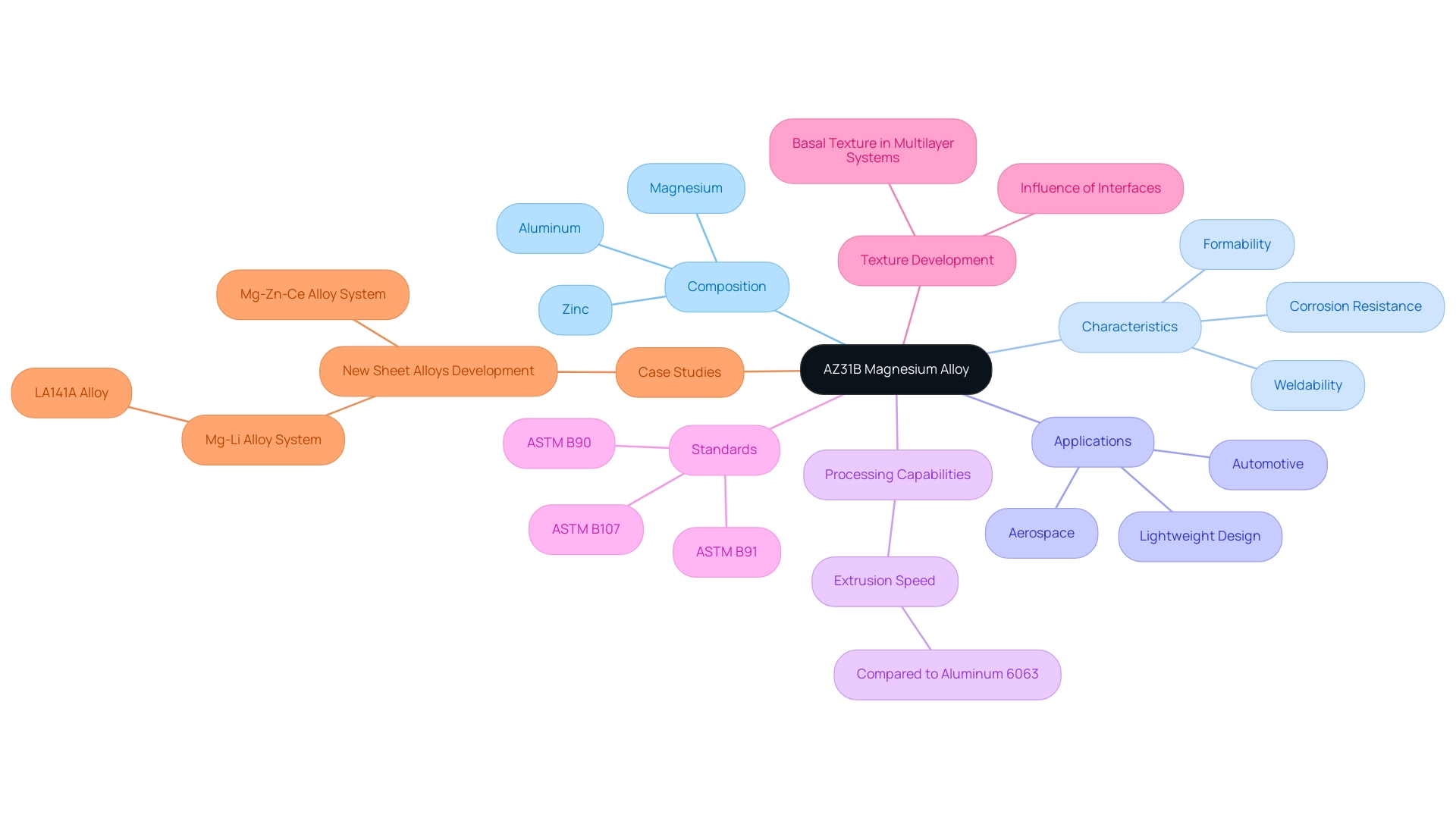
Key Properties of AZ31B Magnesium Alloy: Chemical, Physical, and Mechanical Insights
The az31b magnesium metal composite is recognized for its remarkable array of characteristics, making it a favored option in diverse engineering uses, especially when compared with substances like mica tape products and non-sparking tools, which are essential in electrical insulation and explosive settings.
Chemical Properties: This alloy is primarily composed of magnesium (90%), aluminum (6%), and zinc (3%). Its composition provides exceptional corrosion resistance in various environments, which is crucial for preserving durability in uses exposed to harsh conditions, similar to the needs for az31b magnesium that guarantees reliability in high-temperature settings.
Physical Properties: With a density of approximately 1.78 g/cm³, this alloy stands out as one of the lightest structural metals available. This low density is advantageous in sectors where weight reduction is crucial, such as aerospace and automotive industries, paralleling the lightweight nature of mica tapes used in electrical insulation.
Mechanical Properties: Exhibiting a tensile strength of around 230 MPa and a yield strength of about 150 MPa, az31b magnesium is well-suited for applications that demand an optimal balance between strength and weight. Notably, in loading Case 5 (PP60), the maximum normal stress recorded is 52.110 MPa, highlighting its capacity to withstand significant loads, akin to the mechanical demands placed on non-sparking tools in explosive environments. Additionally, Marwan et al. examined the impact of cryogenic treatment on aluminum type AA6061, revealing significant increases in hardness, tensile strength, and yield stress after processing, which may provide insights into improving the performance of a similar material through comparable methods.
Thermal Properties: The material has a melting point of approximately 650°C, positioning it favorably for various manufacturing processes, including casting and forging, where high-temperature tolerances are necessary. This characteristic is vital for materials like mica tape, which must withstand extreme conditions. Furthermore, the case study titled “Origin and Enhancement of {0001}〈112¯0〉 Texture During Heat Treatment of Rolled Magnesium Alloys” illustrates the development and improvement of specific crystallographic textures during heat treatment, providing valuable information for optimizing processing and performance.
These traits not only emphasize the adaptability of this metal but also stress its significance in engineering uses where performance and efficiency are crucial, particularly when combined with mica tape products and non-sparking tools for improved safety and functionality.
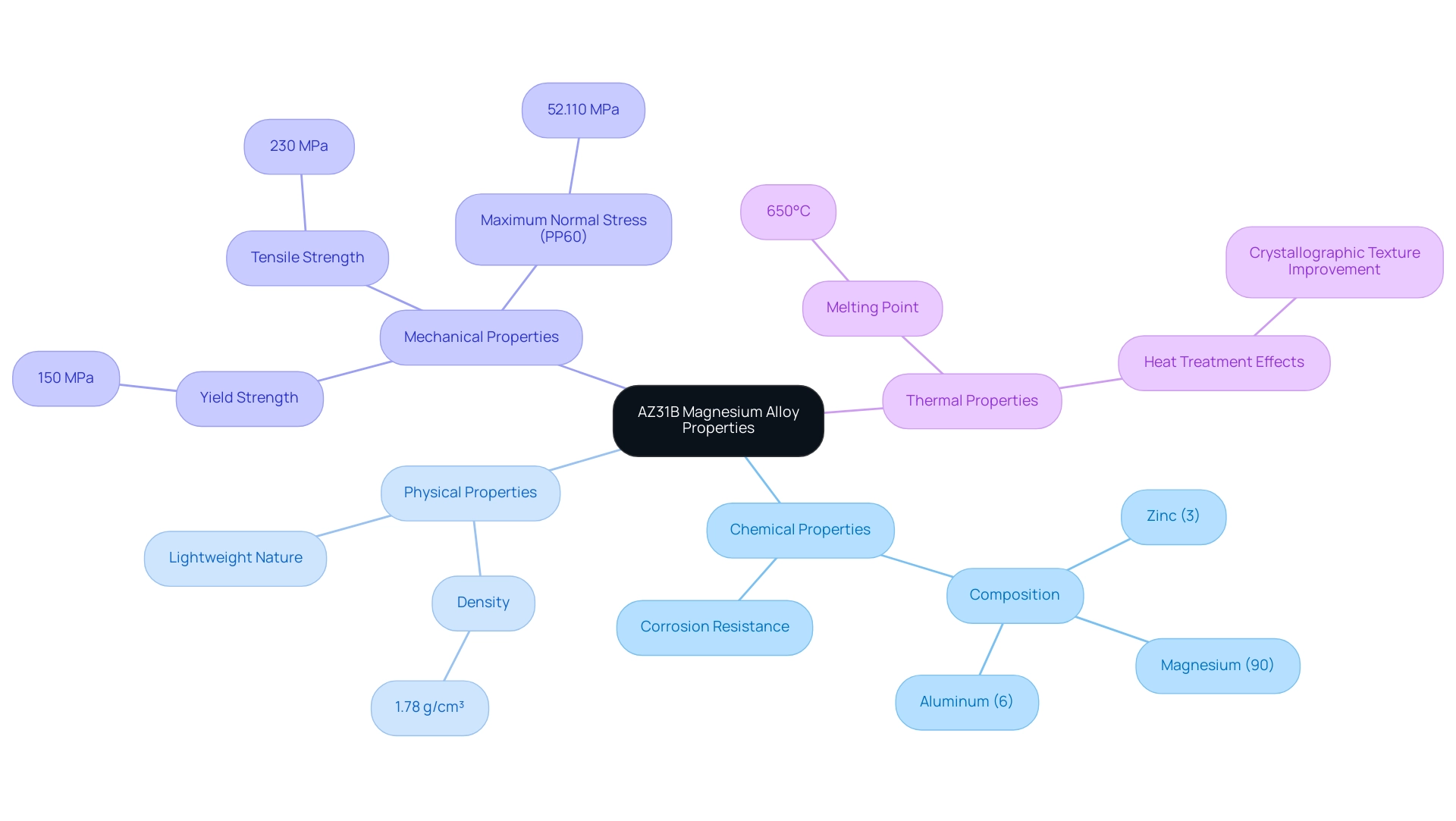
Applications of AZ31B Magnesium Alloy: From Aerospace to Automotive
The magnesium composite is increasingly acknowledged for its versatility across different sectors, offering unique benefits that improve performance and efficiency. In the aerospace sector, the lightweight properties of az31b magnesium make it an ideal choice for aircraft frames and components, significantly improving fuel efficiency and overall aircraft performance. Case studies emphasize its application in electronic chassis and structural plates, where the weight reductions compared to conventional aluminum materials can result in improved operational efficiency.
For instance, the structural applications of magnesium alloys in spacecraft demonstrate significant weight reductions, enhancing overall efficiency and performance. Additionally, this alloy allows for the manufacture of complex parts and components benefiting from dimensional stability, such as jigs and fixtures. In the automotive industry, az31b magnesium is commonly utilized in critical components such as engine blocks, transmission casings, and wheels.
The mixture’s ability to reduce weight is crucial for enhancing vehicle performance and fuel efficiency. Recent advancements in 2024 have further highlighted the significance of metal composites in automotive uses, emphasizing innovations that improve energy absorption through advanced sandwich structures. Notably, the compressive strength of the foam with 63% porosity is 0.61 g/cm³, showcasing the material’s robust properties.
- Electronics: The mixture is also utilized in producing housings and components for electronic devices, striking a balance between durability and lightweight characteristics. This is particularly important as the demand for portable electronics continues to grow.
- Consumer Goods: In the consumer goods sector, a specific metal composite finds use in products such as laptops and smartphones, where portability and performance are paramount.
Incorporating this alloy into these industries not only demonstrates its adaptability but also reflects a strategic move towards materials that contribute to sustainability and efficiency.
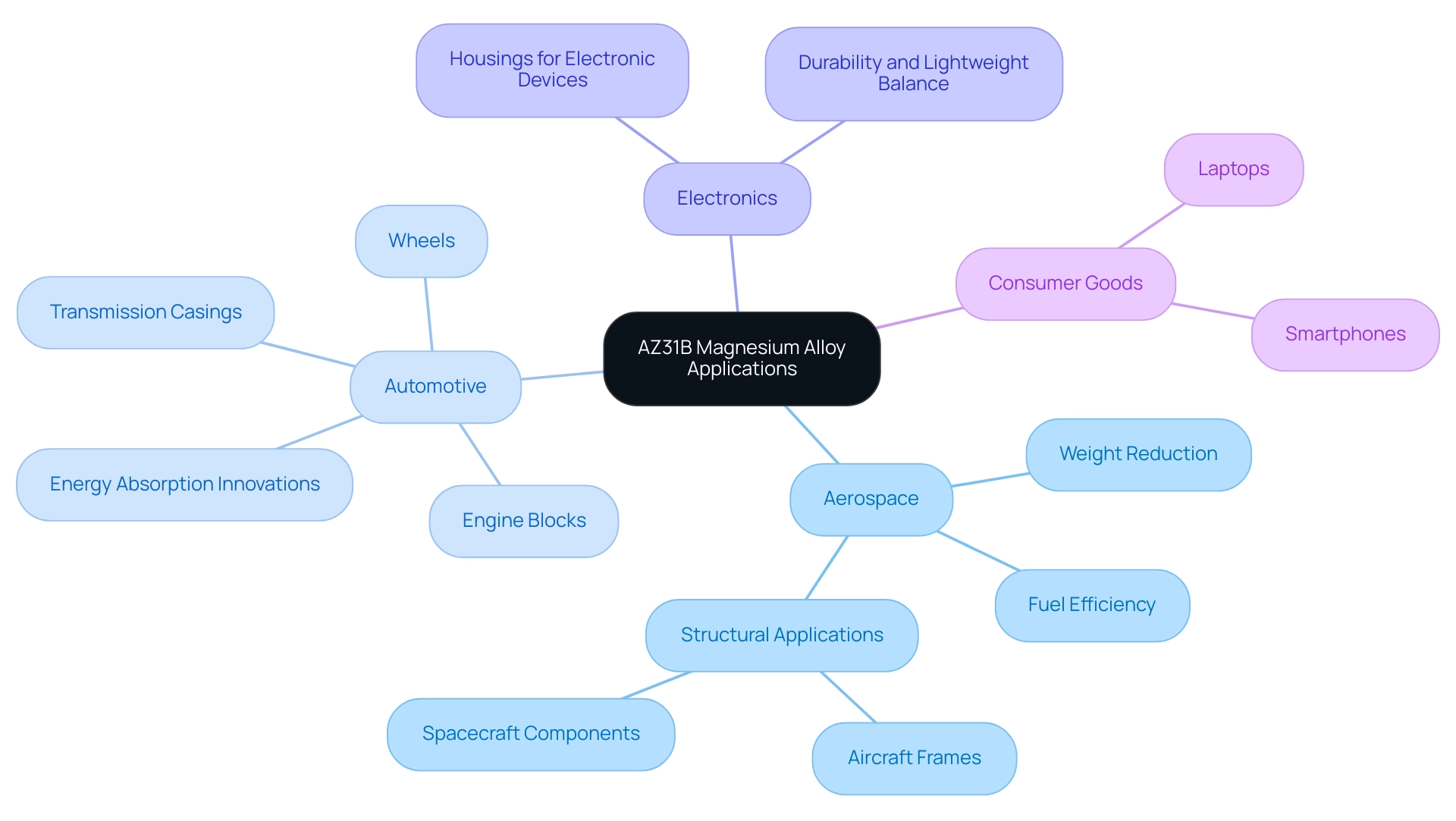
Machinability and Processing Techniques for AZ31B Magnesium Alloy
This specific metal mixture is widely acknowledged for its outstanding machinability, making it a favored option in numerous applications. Key processing techniques for this material include:
- Cutting: Employing high-speed steel or carbide tools is essential for achieving clean cuts. It is crucial to adjust cutting speeds and feeds to mitigate overheating, which can compromise surface quality. According to Ohashi K., in the examination of machined surface quality of magnesium material by end milling, appropriate parameter selection greatly affects the final product’s integrity. Notably, the machining temperature was observed to be higher for LAT in comparison to CT, which underscores the importance of monitoring these parameters during the machining process.
- Forming: The material’s superior ductility allows for effective forming using techniques such as stamping and bending, enabling manufacturers to create intricate shapes with ease.
- Welding: This alloy demonstrates good weldability with both MIG and TIG welding methods. This characteristic is particularly advantageous during assembly processes, ensuring robust joint formation.
- Casting: For creating complex geometries, investment casting techniques are recommended. These methods not only ensure high precision but also yield an excellent surface finish. Recent advancements suggest that employing cryogenic treatment can enhance surface hardness when required, while stress-relief annealing serves as a viable option when stringent hardness specifications are not essential.
Additionally, the case study titled ‘Combining Milling Parameters and Heat Treatment for Machining Requirements’ emphasizes the significance of selecting appropriate milling parameters based on desired surface quality and hardness. Overall, the combination of these techniques enables versatile uses of this metal in various industrial contexts.
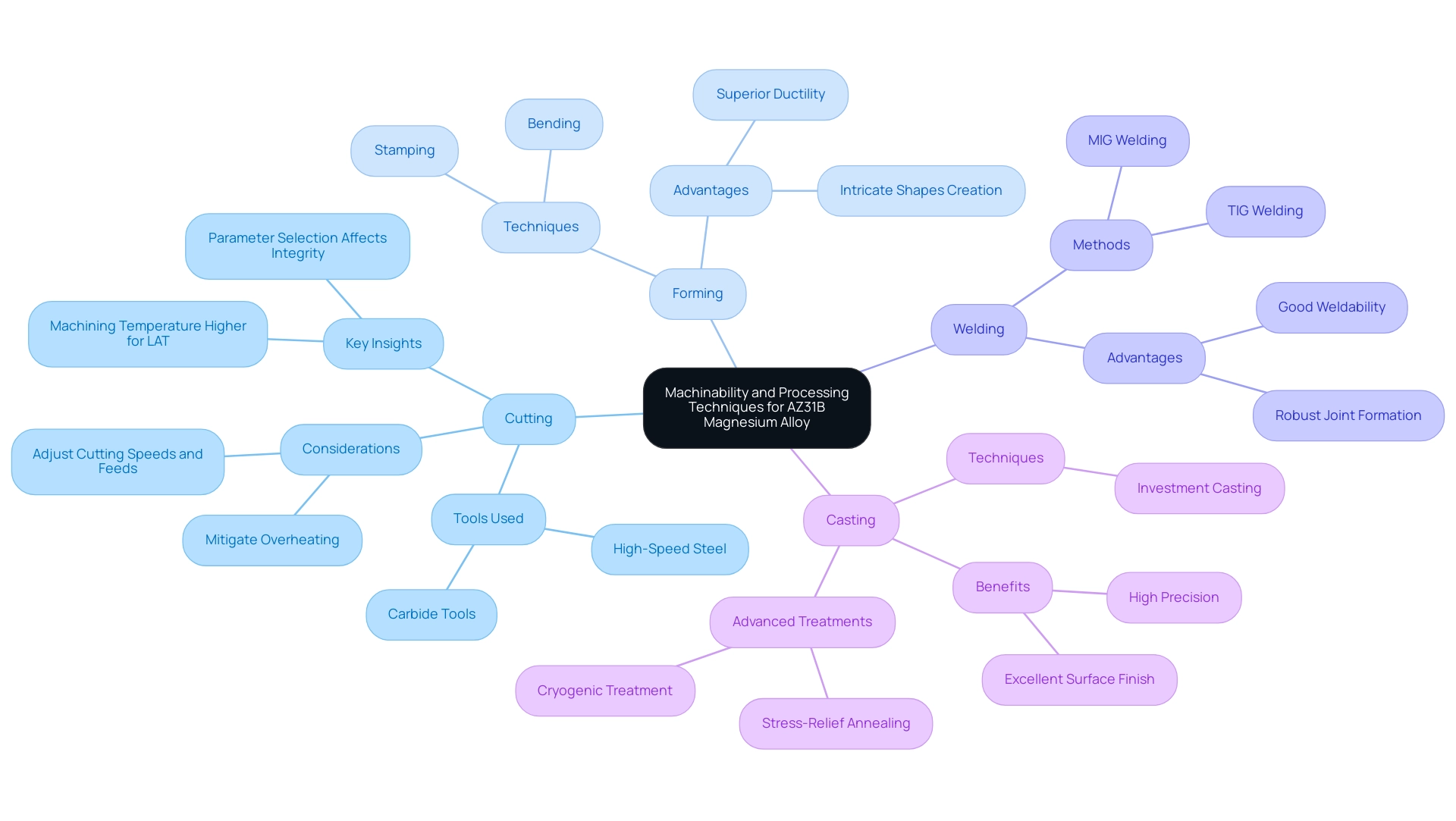
Corrosion Behavior and Protection Strategies for AZ31B Magnesium Alloy
AZ31B magnesium composition exhibits a notable susceptibility to corrosion, particularly when exposed to environments rich in moisture and chlorides. To effectively mitigate these risks, several protection strategies can be implemented:
Surface Treatments: Employing coatings such as anodizing or powder coating forms a robust barrier against moisture and corrosive agents, significantly enhancing the material’s durability. As Gordon Blunn observes,
Coating will assist in managing the dissolution of the metal and maintain the load-bearing capacity of the material.Corrosion Inhibitors: The application of chemical inhibitors is advisable in settings where exposure to corrosive elements is imminent, helping to reduce corrosion rates.
Design Considerations: Optimizing designs to eliminate crevices and other areas where moisture can accumulate is crucial for prolonging the lifespan of the material.
Regular Maintenance: Establishing a routine maintenance schedule to inspect and treat surfaces will ensure the long-term durability and performance of the AZ31B magnesium material.
Recent studies highlight the importance of microstructural control in biomedical uses, as shown in the case study titled ‘Corrosion Behavior of AZ31 Magnesium Alloy with Different Grain Sizes in Simulated Biological Fluids.’ Findings revealed that varying grain sizes notably influenced corrosion rates, indicating that finer grains lead to lower corrosion rates, which reinforces the need for tailored approaches in surface treatment and protection strategies. Furthermore, the corrosion behavior of Q345R in 40 wt.% hydrofluoric acid highlights the comparative challenges encountered by various materials in harsh environments. As research continues to advance, including recent developments in magnesium-based biodegradable alloys that exhibit promising corrosion behavior, keeping abreast of updates on corrosion protection strategies for AZ31B magnesium will be essential for procurement managers seeking optimal performance in their applications.
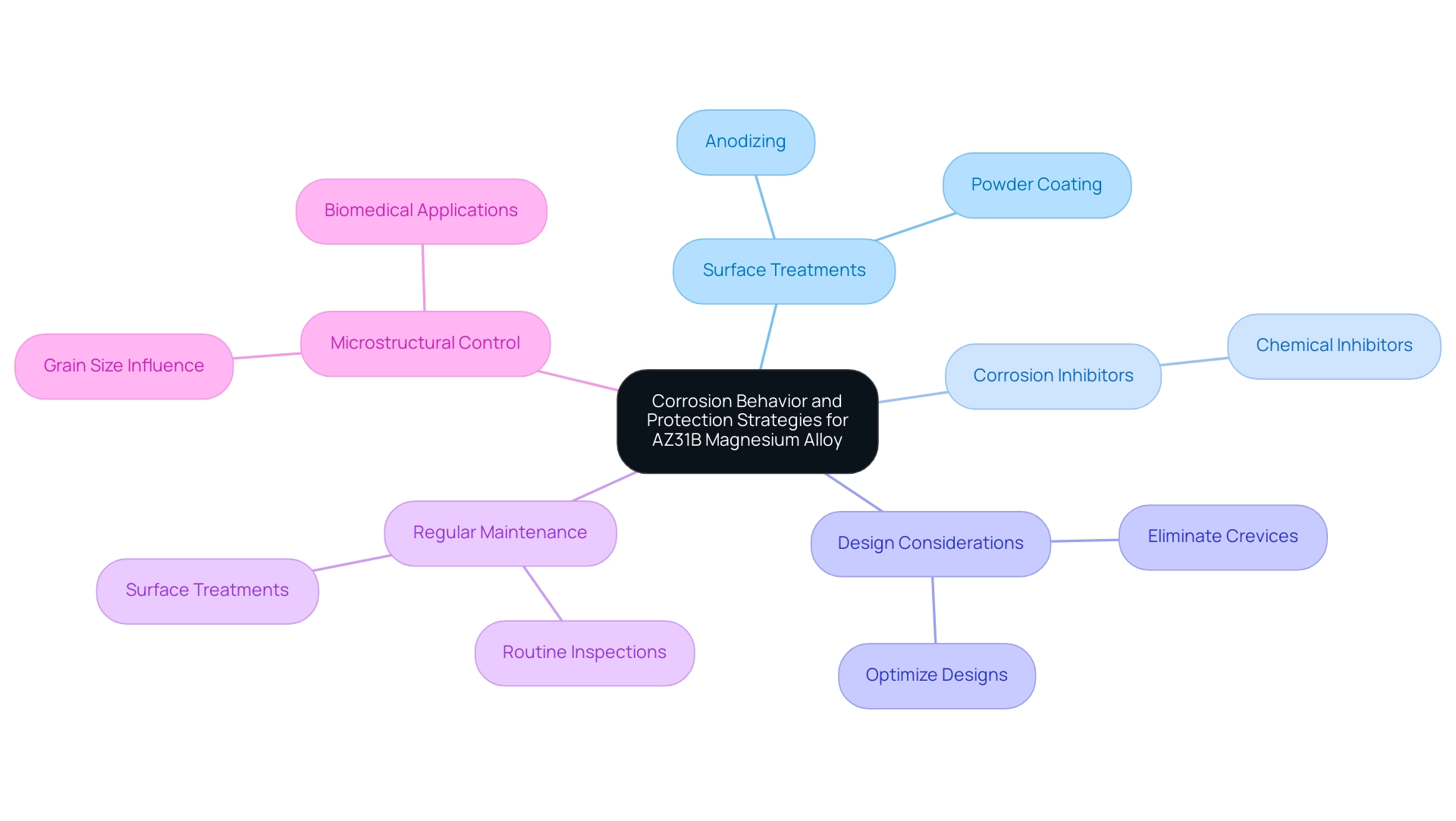
Conclusion
The exploration of AZ31B magnesium alloy reveals its remarkable attributes and diverse applications, underscoring its significance in modern engineering. With its lightweight composition, excellent corrosion resistance, and superior formability, AZ31B stands as a leading choice in industries where performance and efficiency are paramount. Its classification as a wrought alloy, coupled with its mechanical properties, positions it uniquely for critical applications in:
- Aerospace
- Automotive
- Electronics
- Consumer goods
In addition to its intrinsic properties, the alloy’s machinability and adaptability to various processing techniques enhance its usability across sectors. Effective cutting, forming, welding, and casting methods allow manufacturers to leverage AZ31B’s strengths, ensuring high-quality production outcomes. However, attention to corrosion behavior and implementing robust protection strategies is vital to maximize the alloy’s lifespan, particularly in challenging environments.
As industries continue to innovate and prioritize lightweight design and sustainability, AZ31B magnesium alloy’s role becomes increasingly pivotal. For procurement managers, understanding the comprehensive advantages and applications of this alloy is essential for making informed material selection that aligns with strategic goals. Embracing AZ31B not only fosters efficiency and performance but also positions organizations at the forefront of technological advancements in material science.


